Community sits at the heart of city cycling initiative in Brazil’s Fortaleza
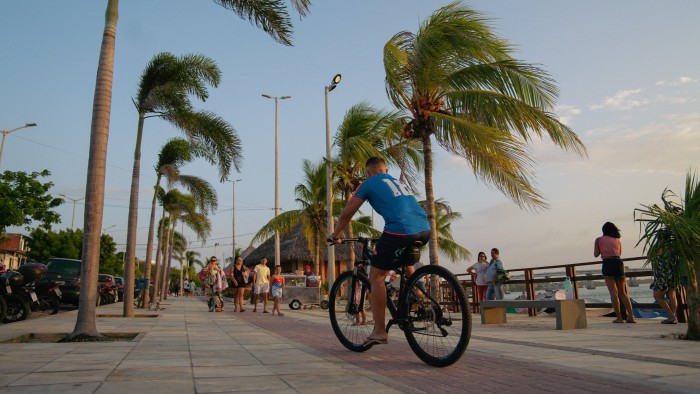
Roula Khalaf, Editor of the FT, selects her favourite stories in this weekly newsletter.
As a young woman, Yvanna Peixoto and her fellow residents spent their free time painting white lines with a makeshift marker along the streets of Fortaleza in north-eastern Brazil to create informal cycle lanes.
More than a decade later, Peixoto, 34, and now a teacher, reflects on how community action helped spur the city’s authorities to repurpose public spaces for people rather than cars.
“It was a public intervention,” says Peixoto. Every Friday, grassroots group Massa Crítica led “Bicicletada”, a community ride to encourage cycling and lobby for safer roads for cyclists. People were reluctant to cycle because roads were dangerous and drivers aggressive, she says, “so we’d cycle very slowly and hand out pamphlets to drivers to make them aware”.
Community action such as Massa Crítica helped sway policy in the coastal city, home to 2.4mn people. Between 2014 and 2022, Fortaleza expanded its cycle network from 68km to 400km. In 2014, a ride sharing scheme was launched with bikes for both children and adults, while cycle racks were installed at travel hubs to create an integrated transport system. Shared bikes are free with the city’s public transport card, while fines for traffic violations are used to fund improvements to the cycle network.
It’s a long way from the state motto coined in the 1920s by president Washington Luís: “To govern is to build roads.”
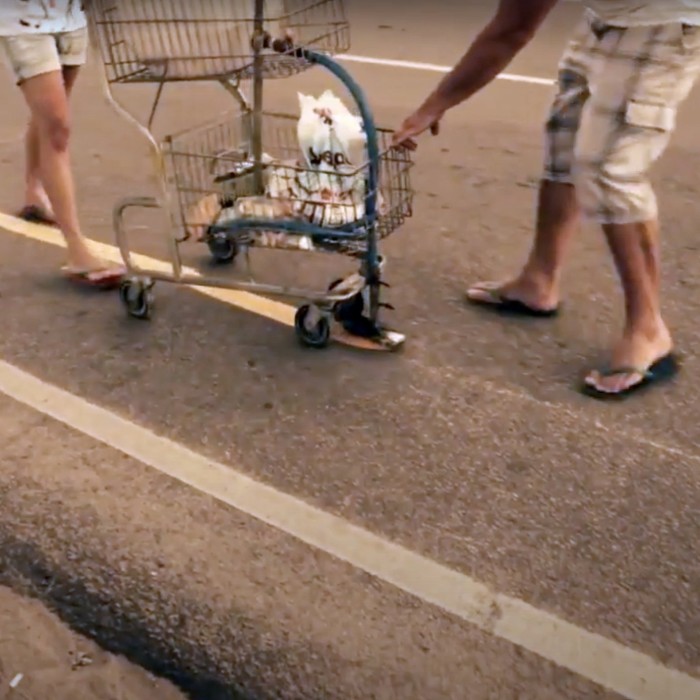
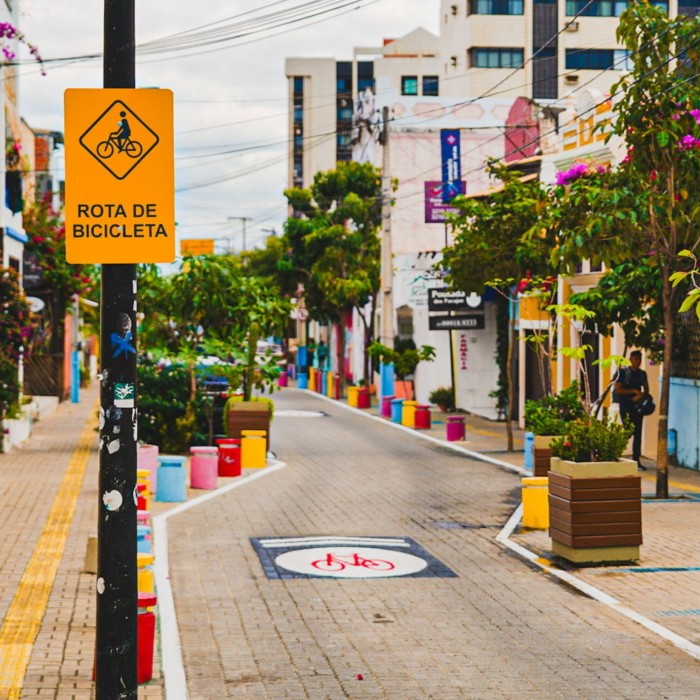
Informal community planning in Latin America dates back to the Spanish and Portuguese colonial era, says José Chong of the UN-Habitat’s Global Public Space Programme, which promotes inclusive spaces. “There will always be a smaller version of a soccer field. A place next to a church or pocket park becomes somewhere to eat. If a government doesn’t provide the facilities, people will do it themselves.”
Official government support for change in Fortaleza came in 2014 when city mayor Roberto Cláudio pushed for expansion of cycle lanes as part of efforts to reduce traffic and pollution and increase mobility. José Sarto continues his predecessor’s commitment with an emphasis on young people. “Young people make up about 33 per cent of our population . . . so we regularly held listening meetings and went into schools” as part of policy consultations, he says.
By 2024, Fortaleza aims to have 600km of protected bike lanes and 100 safe intersections for cyclists, supported by the Bloomberg Initiative for Cycling Infrastructure, a Bloomberg Philanthropies project. Through BICI, 10 cities will receive technical assistance from the Global Designing Cities Initiative and funding. Fortaleza will test innovative materials for lane separation, such as continuous tree pits which increase space for tree roots, soil and hydration, while also providing shade for cyclists.
“The social dimension of sustainability has to be the main objective of public policy,” says Isabela Castro, Fortaleza’s urban mobility co-ordinator.
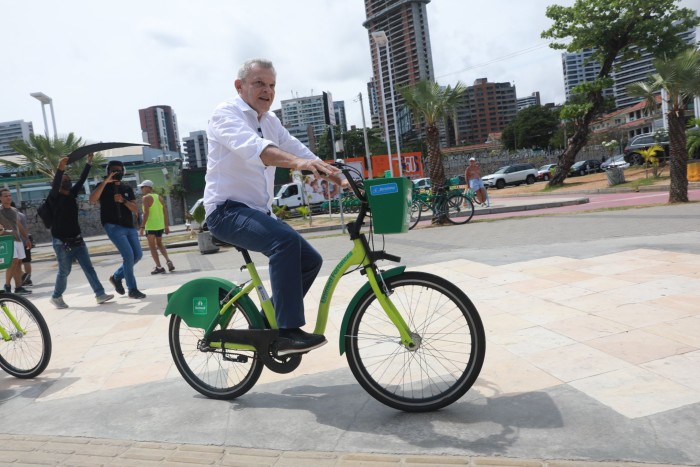
As well as wanting safer roads for cyclists, Fortaleza’s residents lobbied for cycling lanes to increase connections from the city outskirts to the centre.
Government incentives for carmakers and a road-building boom in the 1950s divided the cycle-riding poor from the car-driving wealthy. The inequalities are still visible across Latin American cities today. Peripheral areas, which are mostly low-income neighbourhoods, tend to have narrower streets, making it harder to limit space for cars, says Castro.
“We are not a poor city, but we are a city with a lot of inequalities,” says Luiz Saboia, Fortaleza’s innovation technical lead. “When we started the bike share system, we relied on private companies who didn’t want to go to the outskirts — they wanted to go to the rich part of the city.”
Connections between municipal and federal roads are under federal jurisdiction, adding complications, says Saboia. Though mayor Sarto emphasises: “We can make agreements to get [federal] permission to make these cycle paths . . . we have a good relationship.”
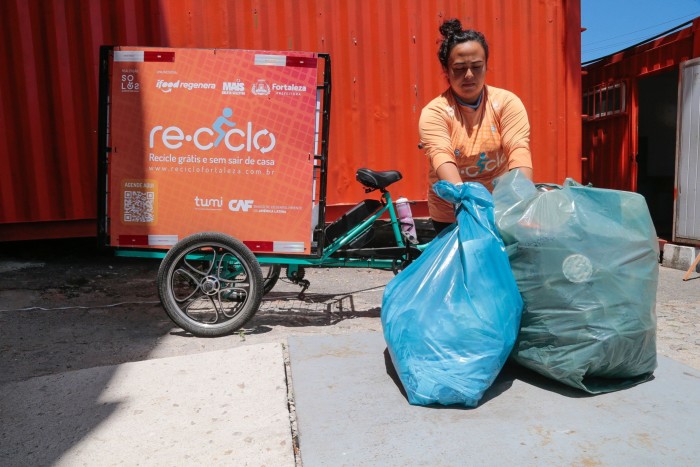
But support for cycling still benefits livelihoods, Saboia says, citing informal waste collectors known as catadores. In Fortaleza, where most of them live on the city peripheries, their income jumped 40 per cent when they used electric tricycles provided by the city instead of their traditional carroças, or carts, as they were able to collect more recyclables which they sell. Many also reported an increased sense of dignity, he says.
Fortaleza takes inspiration from Bogotá, Colombia, where citizen-led car-free Sundays, Ciclovía, started in 1974 to promote cycling. “You can’t understand Bogotá’s culture without Ciclovía,” says Giovanni Zayas of GDCI. “Latin America is writing its own story by reclaiming public space.” More than 60 per cent of Latin American cities have dedicated departments for bike projects and 80 per cent have some form of cycling policy. Even smaller cities, such as Rosario and Córdoba in Argentina, have about 100km of cycle lanes.
In Fortaleza, the number of fatal road accidents has fallen from 377 in 2014 to 157 in 2022. This has been vital in making cyclists feel safer and cycling a more attractive transport option.
As policy and infrastructure changes encourage cycling across Latin America, the social status of bikes is also changing. But residents remain central to developing the new culture.
“I cycle everywhere,” says Peixoto. “I even go to the bar and cycle back with friends.” This includes Aleksandra, also 34, who agrees: “I feel safe coming back from late-night parties on bike paths.”
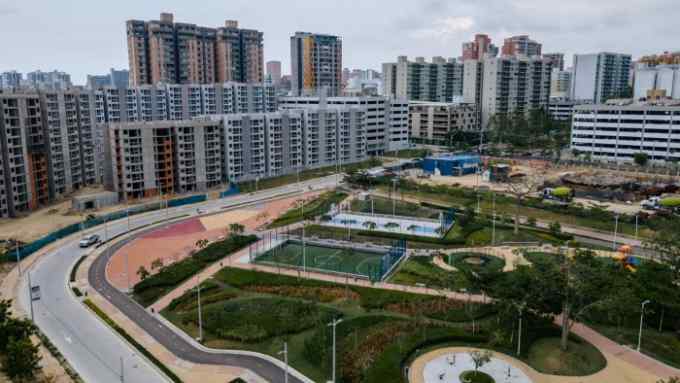
Comments